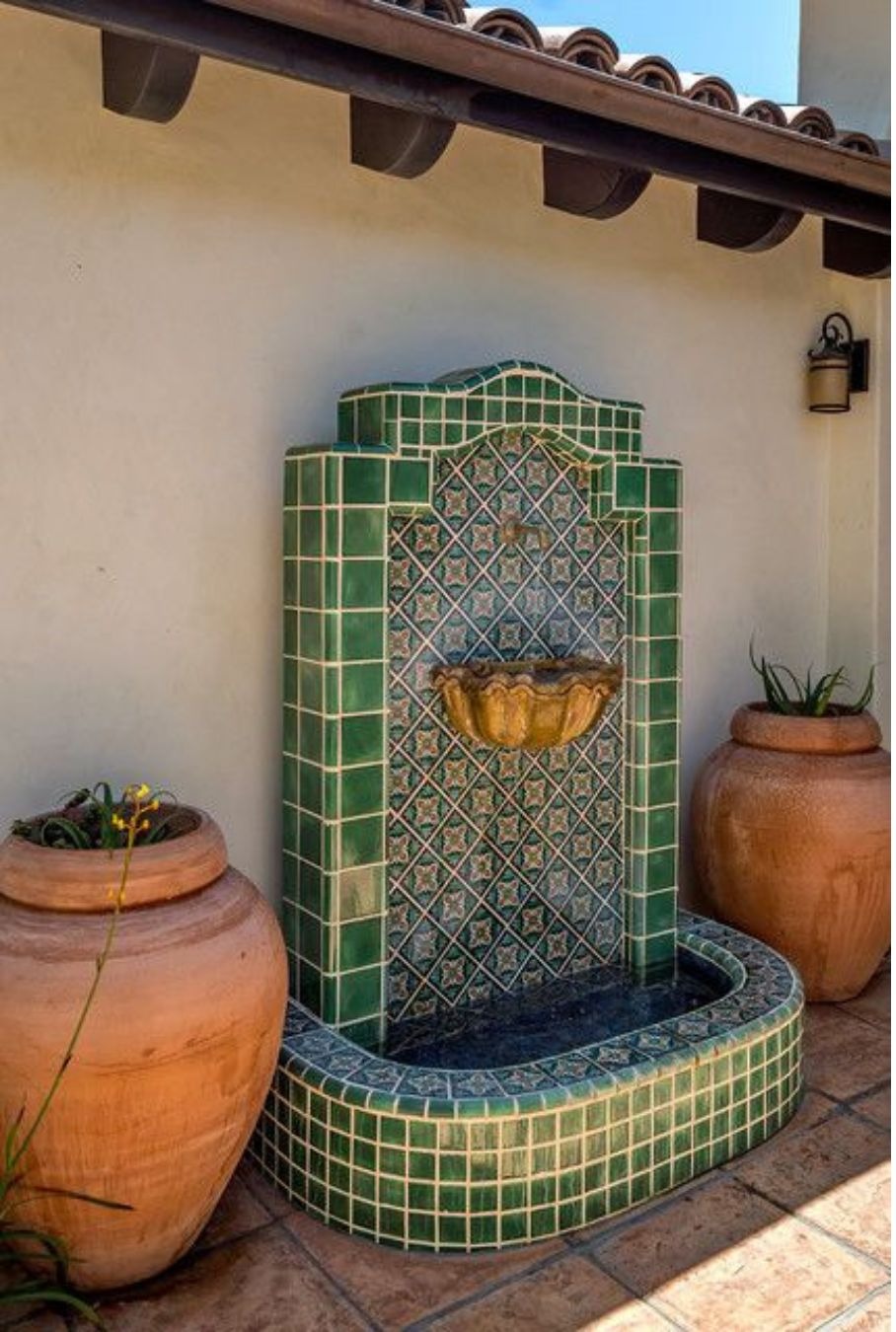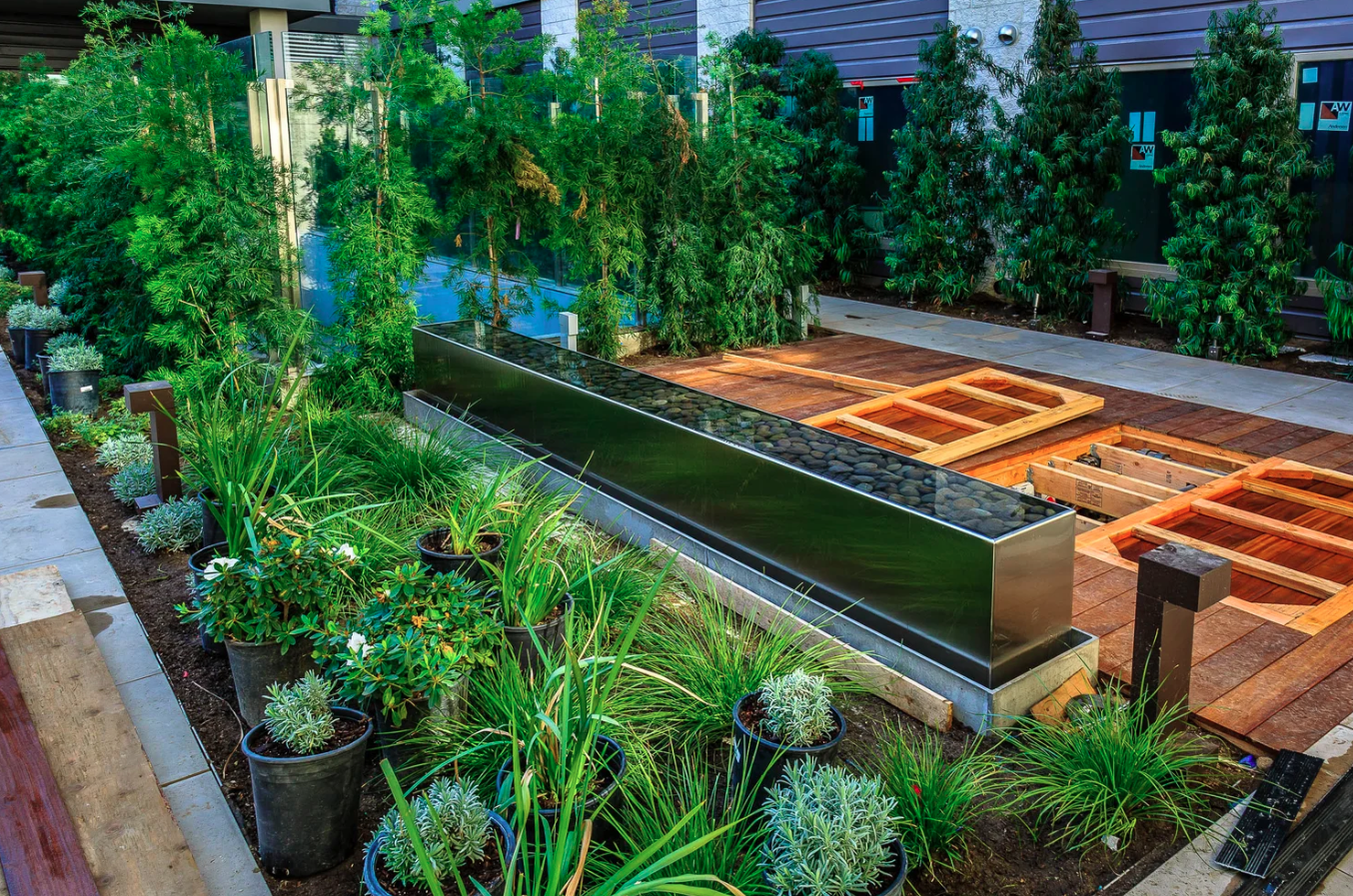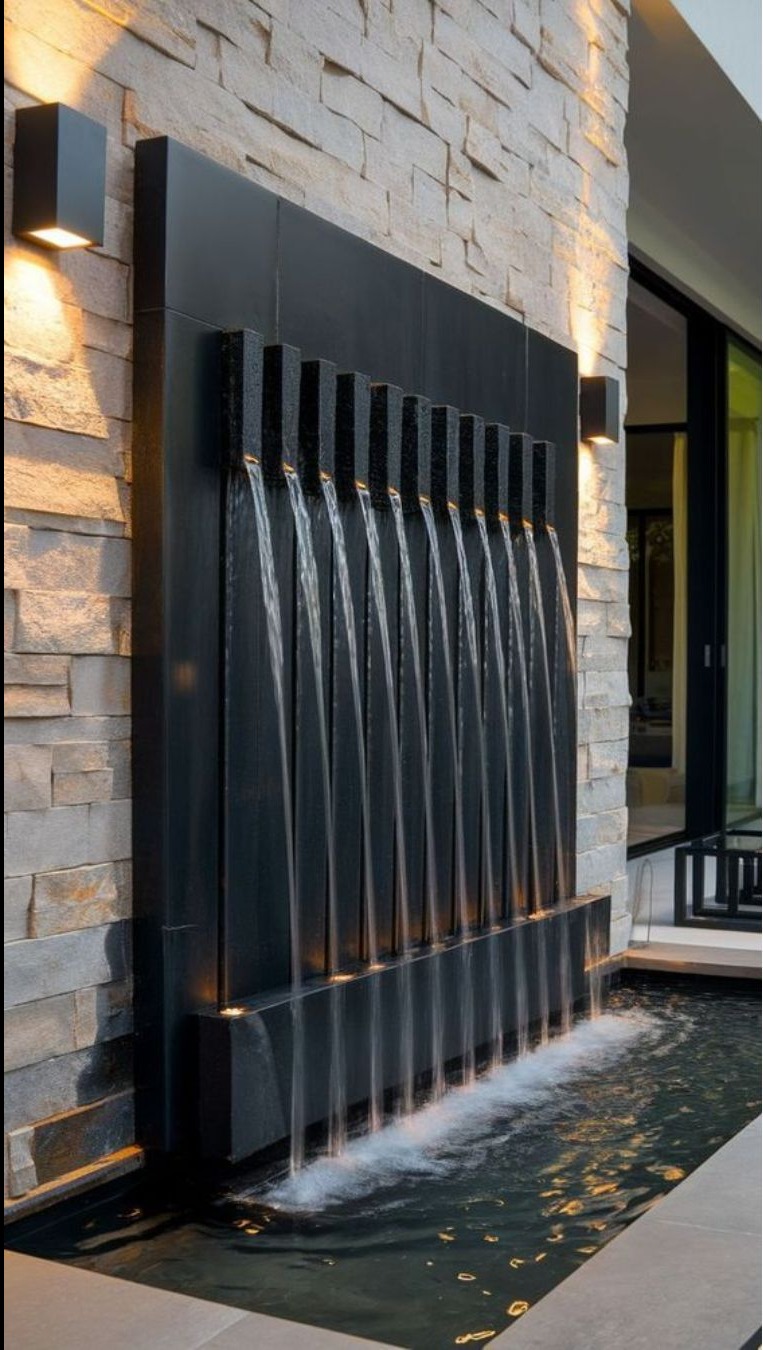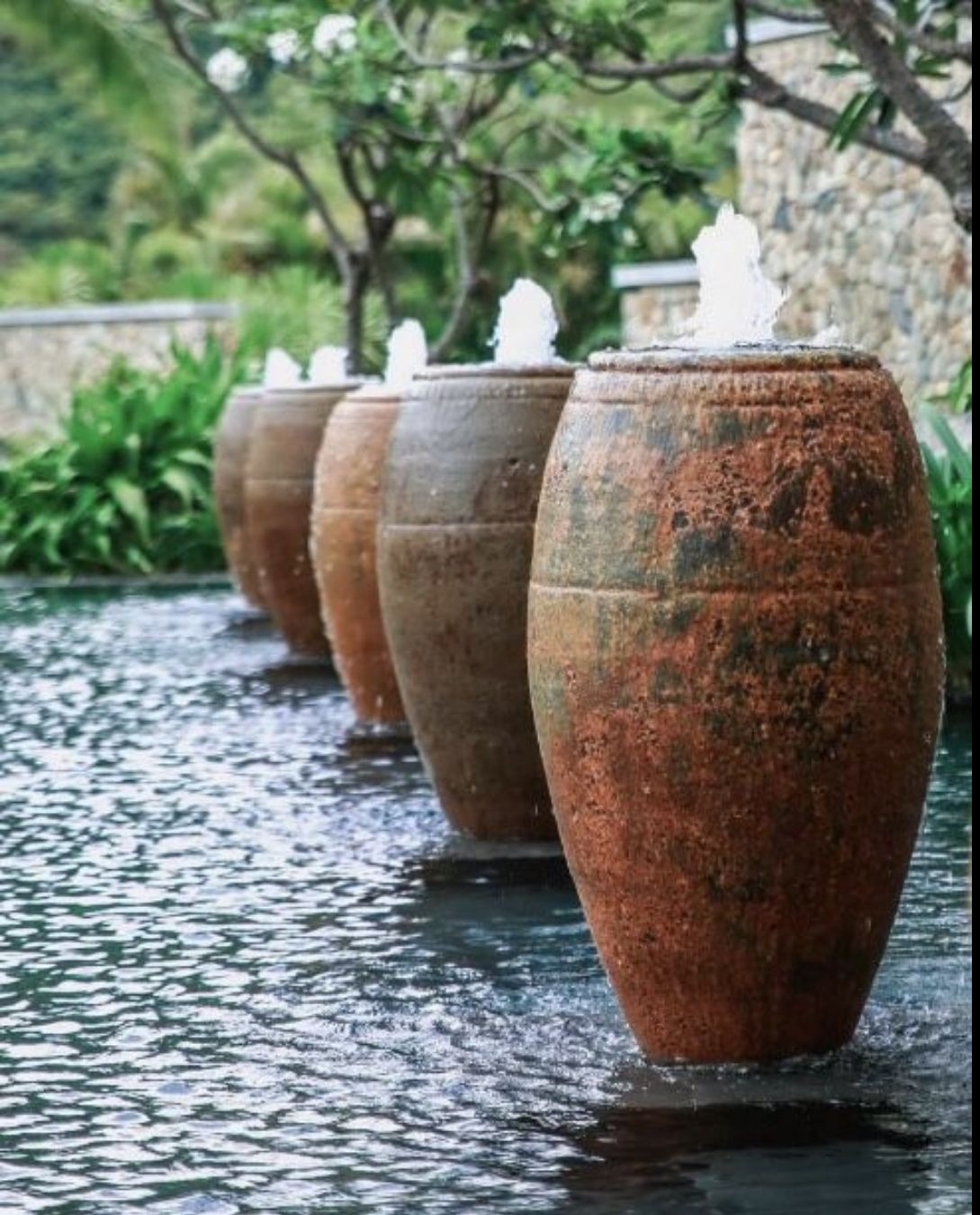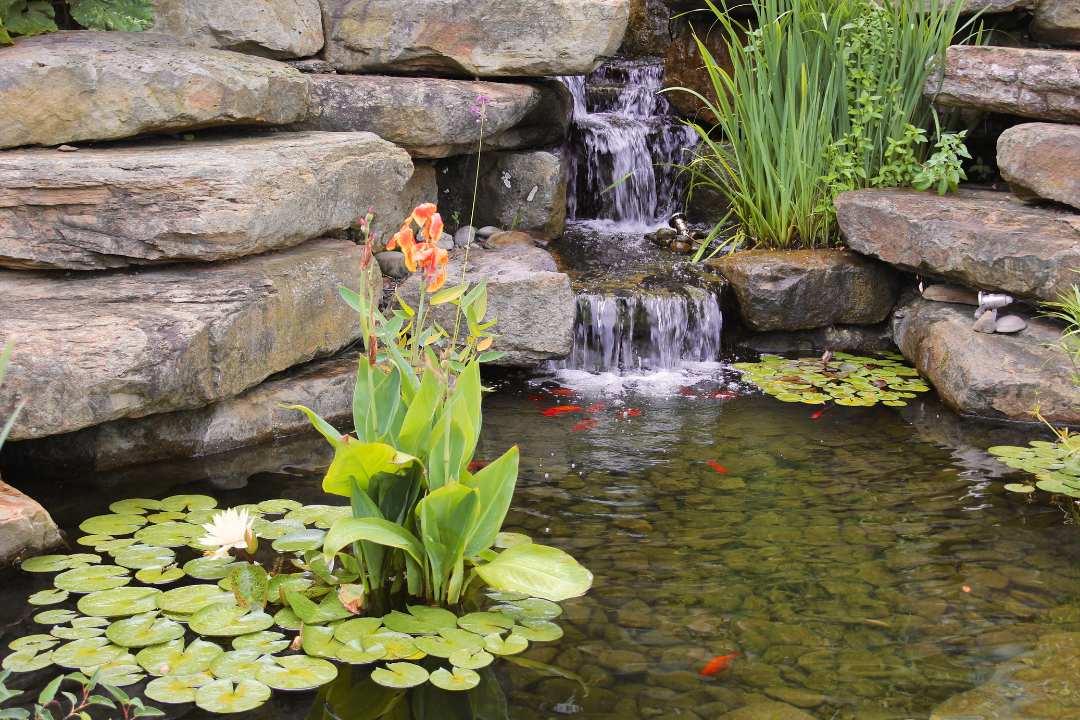
In all but the simplest water features, the clarity of water and the health of the plants and fish depend on a balanced ecosystem. Ponds in the wild and garden pools alike contain a complex network of checks and balances that generally maintain the pond's condition without external help.
If your pond is out of balance, it will give you numerous signals: bad smells, fish dying or gasping for breath at the water surface, dark or green water, as well as stunted and diseased plants.
Here's how to keep your garden pool's ecosystem in balance.
USE ALL THE ELEMENTS.
Plants, fish, and other pond life-in water that is well aerated and maintained-work together. All of them, in the right mix, will keep your pond in prime condition.
Floating plants provide shade, cool and filter the water, and control algae. Submerged plants are also filters, and they feed fish as well as create shelter and spawning areas for them. Fish control mosquitoes (they consume the larvae) and will control the algae, too. Snails, also, have voracious appetites for algae.
Stock fish and plants in appropriate proportions to each other and to pond size. Experiment until the balance is right. As a rule, a 6- by 8-foot pond can handle no more than 16 fish (3- to 5-inch), six water snails (such as great pond or ramshorn), and 15 bunches of submerged plants.
KNOW YOUR WATER.
Invest in a kit for water testing. They're inexpensive and a number of types are available. Test for ammonia and nitrite levels when you first fill your pond and then periodically thereafter, particularly if fish are dying.
If you do have a chemical problem, a partial water change, described below, can help lower ammonia and nitrite levels.
KEEP IT FILLED.
Don't let the pond evaporate-a drop of an inch or more below its normal water level starts to create unhealthy concentrations of salts and minerals and exposes the liner to deteriorating UV rays.
When you add water, fill the pond with just a trickle from the hose (keep it at the bottom of the pond) to allow fish and other pond life to adapt to the gradual changes in temperature and pH. Don't add more than 10 to 20 percent of the total volume at any one time or the fish could go into shock.
PARTIALLY CHANGE THE WATER WHEN NEEDED.
Although it's best to keep the pool filled, over time-even with refills salt and waste materials build up in the water.
To freshen it, drain the pond by about 10 percent of its capacity (preferably by drawing water from the bottom where concentrations of harmful substances are highest). Then refill it. It's best to do this right before a rain so rainfall can replace at least some of the water. (Never work around your garden pond if there's a threat of lightning.)
PROVIDE AERATION.
Whether from a fountain or waterfall, splashing water keeps the water well oxygenated, and that's essential for supporting fish. Oxygenated water also stays fresh, warding off foul-smelling bacteria that thrive in a low-oxygen environment.
If you don't have a fountain, or if it's not strong enough to aerate the water and the fish are gulping for air at the surface, add a pump with an air stone on the bottom of the pond.
Water from a hose is also acceptable as long as you add it slowly with the hose placed at the bottom of the pond and add no more than 20 percent fresh water by volume.
KEEP THE POND FREE OF LEAVES AND DEBRIS.
Debris decomposes, and if not removed, it fouls the water. Skim leaves, fallen petals, and other floating plant matter from the bottom and surface of the pool with a net. (In a very small water feature, you can probably do this by hand.)
Pinch off yellowing and dying leaves; they can turn into pollutants if left unattended. If tree leaves are a problem in autumn, put a net over the pool to catch them or make skimming the pond a daily routine.
In late fall, when you remove the pump for the winter, make sure the water is free of debris before the pond ices over.
KEEP IT UNDER CONTROL.
If fish numbers get out of hand, give some away. Thin invasive plants regularly and divide overgrown plants so that no one element begins to take over.
CONSIDER A FILTER.
If the garden pool has continuing problems with debris, too much light, or excessive fish waste, consider adding a biological filter to the pool setup.
PREVENT RUN-OFF.
When fertilizing or applying other chemicals to the lawn and plants surrounding your garden pool, don't let the materials run off or otherwise trickle into the pool water. They can be toxic to fish, and they may promote algae growth in the water.
FEED FISH PROPERLY.
Feed fish only what they can devour in about 10 minutes. Don't feed them unless they are ravenous.
In hot weather, don't worry if the fish don't seem to be eating much. In summer, they'll get food from other sources: insects and plants. Feeding fish too much or too often will foul the water and create a need for a larger filter.
Keywords
pH
kit
need
wild
dark
rule
KEEP
hose
rain
pump
drop
lawn
food
hand
Ponds
shade
types
shock
lower
salts
liner
checks
breath
summer
larvae
5-inch
DEBRIS
bottom
autumn
threat
winter
trickle
16 fish
clarity
shelter
refills
filters
ammonia
insects
UV rays
minerals
one time
fountain
ELEMENTS
CONSIDER
balances
capacity
ramshorn
POND FREE
pond size
air stone
right mix
yellowing
FEED FISH
PARTIALLY
lightning
late fall
waterfall
10 minutes
10 percent
15 bunches
pool water
Experiment
pollutants
Stock fish
pool setup
great pond
bad smells
tree leaves
green water
one element
fresh water
temperature
8-foot pond
hot weather
garden pond
Skim leaves
dying leaves
garden pools
total volume
algae growth
fish numbers
daily routine
fallen petals
water testing
other sources
water surface
larger filter
external help
spawning areas
nitrite levels
waste materials
diseased plants
complex network
Floating plants
other chemicals
prime condition
other pond life
PREVENT RUN-OFF
gradual changes
numerous signals
six water snails
10 to 20 percent
overgrown plants
chemical problem
PROVIDE AERATION
Oxygenated water
Submerged plants
biological filter
harmful substances
normal water level
balanced ecosystem
voracious appetites
small water feature
continuing problems
Thin invasive plants
excessive fish waste
partial water change
low-oxygen environment
foul-smelling bacteria
simplest water features
appropriate proportions
Fish control mosquitoes
unhealthy concentrations
other floating plant matter

